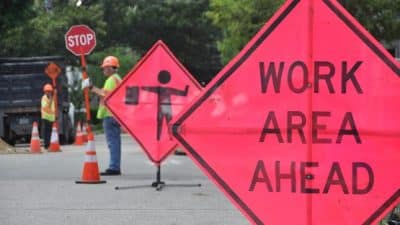
The study marks the first time the researchers have quantified the national reduction in costs and injuries following the implementation of 2000’s Needlestick Safety and Prevention Act, a law UVA helped champion.
“When disparate interest groups cooperate, strong, fact-based legislation can be crafted. In this case, healthcare professionals joined forces with their associations, legislators, researchers, hospital administrators, government workers and medical device manufacturers to support the legislation. And the result was as intended,” said Elayne Phillips, RN, MPH, PhD, of the UVA School of Medicine and the UVA School of Nursing. “Even in the absence of knowledge regarding subsequent reduction in disease, the savings attributed to the injuries alone is significant and will continue into the future.”
Dramatic Reduction in Injuries
The Needlestick Safety and Prevention Act required employers to provide safer devices (such as safety syringes), review exposure-control plans annually and maintain logs of all injuries by sharp items. It also gave healthcare workers who use the devices a greater role in selecting those devices.
To assess the nationwide effect of the legislation, the UVA researchers reviewed injury data collected from 85 hospitals in 10 states between 1995 and 2005. This work was conducted under the auspices of UVA’s International Healthcare Worker Safety Center, Janine Jagger, PhD, MPH, director. The law, the researchers found, reduced accidental healthcare injuries by more than a third following its implementation in 2000. Based on those figures, the researchers have calculated the nationwide reduction in needlestick injuries at more than 100,000 a year and the annual cost savings at $69 million to $415 million.
“The results of this study are very heartening as they confirm that the prevention measures we have been advocating for 20 years and that are now legally required have had a remarkable impact. It is a great public health success story,” Jagger said. “Since the Needlestick Safety and Prevention Act of 2000 was passed, hundreds of thousands of healthcare workers in the U.S. have unknowingly been spared the trauma of sharps injuries and the possibility of contracting bloodborne pathogens. The risk they face today is a very small fraction of what it was two decades ago. The added bonus is that many other countries are adopting our legislative model and multiplying the impact of our efforts in the U.S.”
Call for More Safety Measures
The findings have been published online by the journal Infection Control and Hospital Epidemiology and will appear in a forthcoming print edition. The article was authored by Phillips; Mark R. Conaway, PhD; Ginger Parker, MBA; Jane Perry, MA; and Jagger, all of UVA.
While the needlestick legislation has had a dramatic impact, the authors note that there is still more work to be done to ensure the safety of healthcare workers across the country.
“Healthcare practitioners, educators, administrators, researchers, device manufacturers and policymakers all have roles to play in addressing the remaining challenges in needlestick risk reduction,” the authors write in their paper. “Protecting the health of the healthcare workforce is critical to preserving the healthcare system.”










